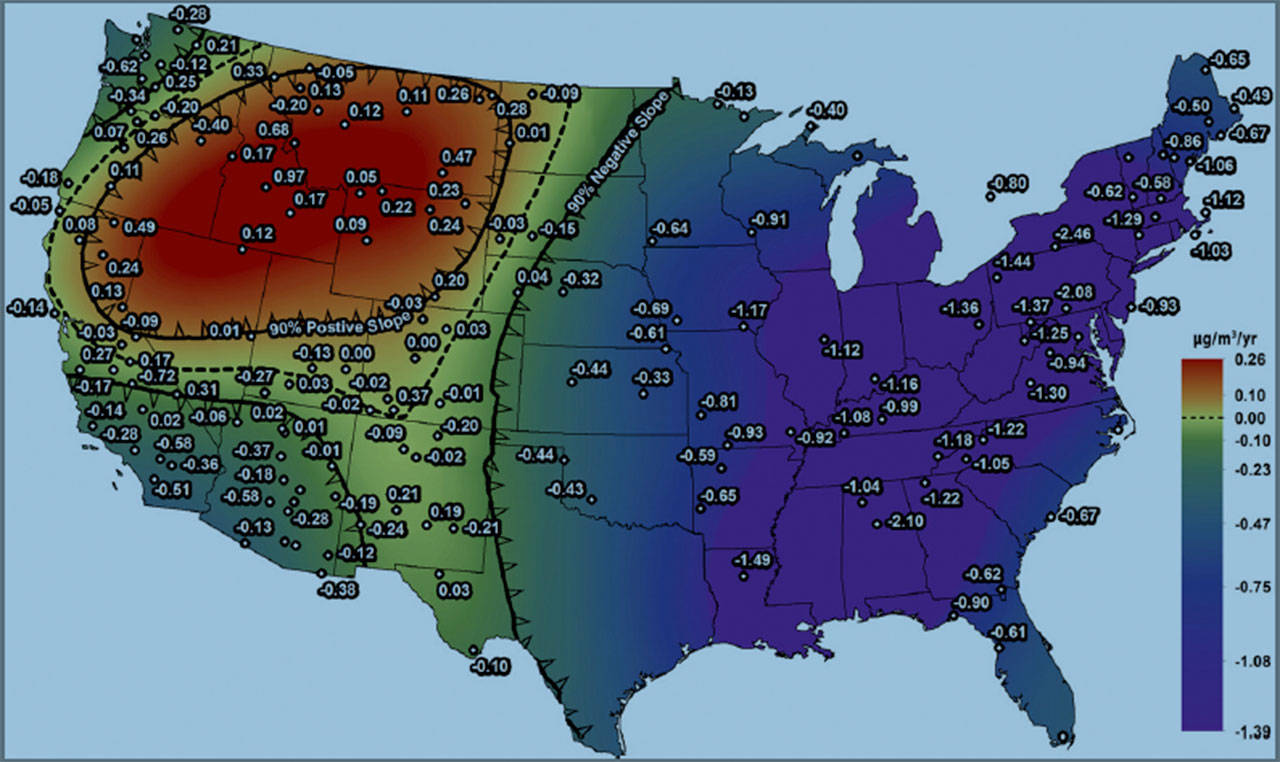Air quality in many western states is getting worse even as air across the rest of the country is getting cleaner.
A study conducted by University of Washington Bothell professor Dan Jaffe and doctoral student Crystal McClure found that air in the Northwest is getting dirtier due to fine particulate matter, which is known to be harmful to humans. Although many cities and urban areas still exceed federal levels for these fine particles, the overall reduction comes from a decrease in human emissions across the country. Fine particulate matter are small particles of material that are so small that they can be inhaled and work their way deep into the lungs or into the bloodstream and can cause health problems, especially for people with lung or heart conditions.
The study looked at extremely small particles with a diameter less than 2.5 microns and focused on the worst seven days of the year for pollution. A micron is one-millionth of a meter. To put this into perspective, a human hair is 50 to 70 microns in diameter. Data was analyzed from between 1988 to 2016 from monitoring stations in rural parts of the country to avoid interference from pollution from cities. It found that in many western states during the dirtiest seven days in a year, pollution is getting worse. This includes much of Eastern Washington and Oregon, Nevada, Idaho, Montana and Wyoming and some of Utah and California. Notably, the Seattle-Portland corridor seems to have avoided much of the increase in air pollution.
The study found wildfires are a significant source of these particles and since the mid-1980s there’s been an increase in the frequency and duration of large fires, which the report suggests is due to climate change and warmer, drier conditions.
“This is another nail in the coffin that climate change is real and is happening now,” Jaffe said in a press release.
According to the Union of Concerned Scientists, which published information on fires in the west, in the 1980s there were around 140 wildfires larger than 1,000 acres. Between 2000 and 2012 there were around 250 wildfires of the same size. The average length of wildfire seasons was around five months in the early 1970s, but this has increased to more than seven months. At the same time, annual temperatures in the western U.S. have increased by nearly 2 degrees, leaving forests drier for longer periods of time and leading snowpacks to melt sooner. During the 2015 wildfire season, a particularly bad one, more than 10 million acres burned across the U.S.
By mid-century, temperatures in the western U.S. are expected to increase even more, between 2.5 to 6.5 degrees due to human emissions. This will lead to forests suffering drought stress, and the areas where forests are water-limited is projected to increase to 32 percent by the 2020s, another 12 percent by 2040 and an additional 12 percent by the 2080s. Drought-stressed trees are susceptible to both large wildfires as well as pine beetle outbreaks, which also increases the likelihood of wildfires.


